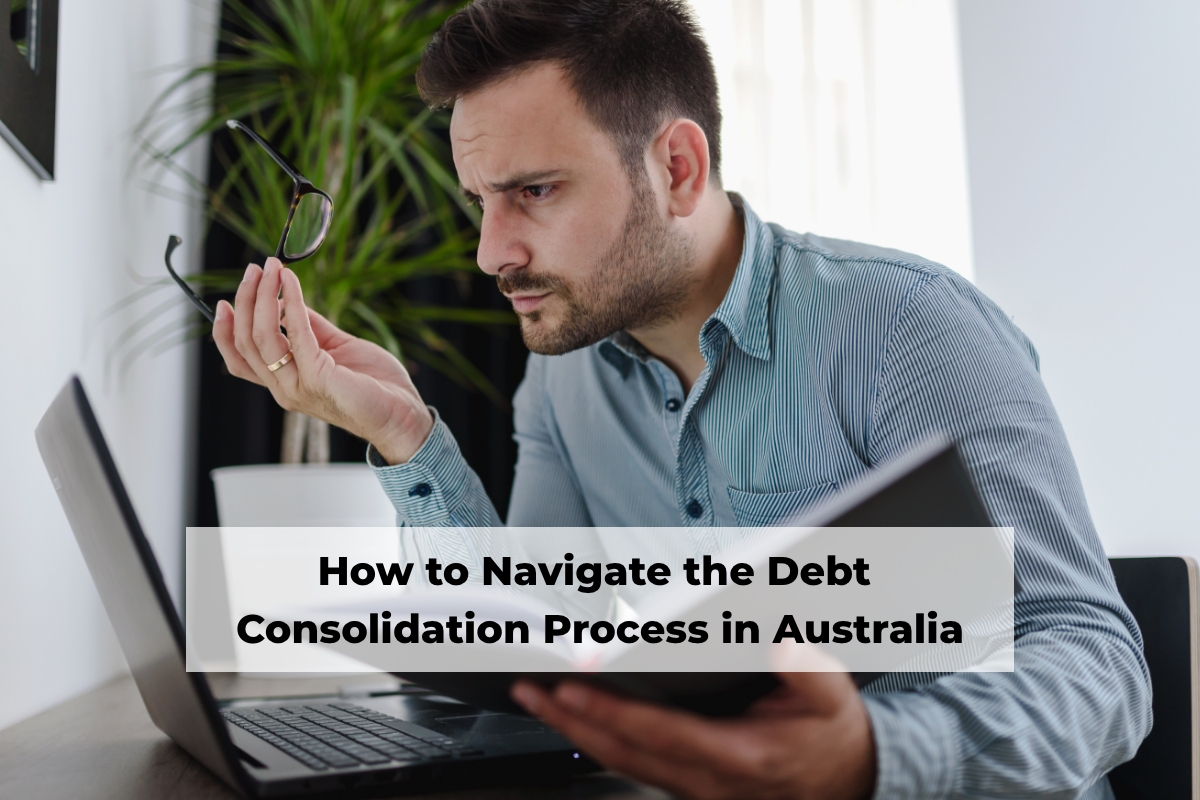
Debt consolidation in Australia helps relieve financial stress on debtors. It consolidates multiple debts into one, eliminating the need to track different debt amounts and due dates for different creditors.
Consolidating your debts has several advantages. These include the potential to reduce interest and fees you owe. However, debt consolidation may not address the root cause of your debt issues.
Learning how to navigate the debt consolidation process can help you reap the maximum benefits of debt relief.
Key Takeaways
- Debt consolidation combines multiple debts into easy regular monthly instalments.
- Understanding how the debt consolidation process works, from applying to handling repayments, can help break it down into manageable steps.
- Debt management specialists offer tailored advice and support to suit your financial circumstances.
What is Debt Consolidation?
Debt consolidation combines multiple debts into one. This typically means taking out a personal loan, using those funds to pay off existing debts, and repaying the new debt consolidation loan under more favourable terms.
Consolidating your debts can also mean transferring your credit card balance to a new card, one with lower interest rates and fees. Negotiating with creditors is another key step, which a Debt Management Specialist from Debt Fix can help you with.
How Does the Debt Consolidation Process Work?
Applying for and managing a debt consolidation plan may seem stressful. However, understanding the steps involved can help make the process easier. Here’s a breakdown of each step, a debt consolidation checklist from applying to managing debt repayments.
1. Review Your Existing Debts
Take stock of your existing debts. Use an online repayment calculator to determine your borrowing power. Enter your ideal borrowing amount, loan type, loan term, interest rate, and repayment frequency. Use the results to determine what you can afford in regular repayments.
2. Review Your Credit Rating
Your credit rating is an assessment of your creditworthiness to a lender. It is a numerical figure determining your ability and willingness to repay your debts.
A lower credit rating means you have a poor financial history, which may include missing or late repayments. A higher credit rating means you have a good financial history, which means you have a low default risk. Lenders are more likely to approve debtors with higher credit ratings.
Specialist lenders offer personal loans with bad credit. They specialise in helping those with bad credit get approved for loans. Even if approved, you may need to accept unfavourable borrowing terms, such as higher interest rates.
3. Compare Loans
Compare lenders and review their offerings. Focus on loans that offer lower interest rates than your existing ones and minimal fees. Your regular repayments should be lower, too.
Read the fine print and be mindful of hidden costs. Some loan terms penalise you for repaying your debts early, along with closing old accounts and opening new ones.
4. Apply for a Personal Loan
Apply with a lender whose terms meet your needs. During the application process, make sure you choose ‘debt consolidation’ as the purpose of the loan. This makes it easier for lenders to determine your ability to meet your loan repayment obligations.
Do not apply for too many personal loans. Each application attempt will appear on your credit report and negatively affect your credit rating.
5. Pay Off Your Outstanding Debts
Use the funds from the new loan to pay off your outstanding debts. Then continue to make repayments until the new loan is paid off. Notify your lender if your circumstances change or if you need to re-negotiate your debt repayment terms.
Missing too many repayments could void your debt agreement, resulting in costly fines and penalties.
Why Consult a Debt Management Specialist
Consulting a debt management specialist can provide the financial security and peace of mind you deserve. Companies like Debt Fix review your circumstances and propose custom solutions that work for you. It only takes 30 seconds to apply, and doing so will not affect your credit rating.
Debt management specialists are expert consultants and negotiators. They listen to your concerns and recommend viable solutions. They help you compare and choose the right loans for you. They also negotiate with creditors to establish mutually beneficial loan terms.
Speak to Debt Fix Today
Juggling multiple debts can be emotionally stressful. But you don’t have to do it alone. For greater financial freedom, talk to Debt Fix for debt consolidation in Australia.
Get back in control of your finances. Get started today. Your application is 100 per cent confidential and obligation-free.
Frequently Asked Questions (FAQ)
What’s the Difference Between a Secured and Unsecured Loan?
Secured loans tie an asset, such as a car or house, to your debt. If you default on your loan, creditors can sell your nominated assets to recoup the value of your debts. Unsecured loans have no assets tied to your loan.
What Type of Debts Can You Consolidate?
Almost any type of personal debt can be consolidated into one. These include credit card balances, medical bills, utility bills, and pay-as-you-go debts. You can also consolidate auto loans, such as new vehicle purchases.
Is Debt Consolidation Right for You?
Review your personal and financial circumstances first. Consider reaching out to a debt management specialist at Debt Fix. They can review your situation and propose a debt relief plan tailored to your needs.


